[SOLVED] OBS Failed to Connect to Server
OBS may fail to connect to the server if its installation is outdated. Moreover, the wrong configuration of the Bind IP or MTU may also cause the issue at hand. The user encounters the issue when he tries to stream (regardless of the streaming service) through the OBS application but encounters the following type of message:
Failed to connect to server. The connection time out. Make sure you’ve configured a valid streaming service and no firewall is blocking the connection.

Before moving on to the solutions to fix OBS failed to connect to the server, check if you can stream in OBS on a different network or a different device on the same network. Also, check if the streaming service servers are up and running. Moreover, make sure to enable Wi-Fi (even if you are using an Ethernet cable). Additionally, check if the Ethernet cable is plugged into a regular Ethernet port, not a 10GE port. Furthermore, check if rebooting your PC and networking equipment solves the problem. Last but not least, if you are hosting a Vodcast, then make sure to end it and then try to stream using OBS.
Solution 1: Create and Re-enter the Stream Key
A temporary glitch between the OBS application and streaming service may cause the server issue and may get cleared after re-entering the Streaming key after resetting key. For illustration, we will discuss the process for Facebook Live, you may follow the instructions as per your streaming service.
- Launch the Facebook in a web browser and click on the Live Video (in the new post section).
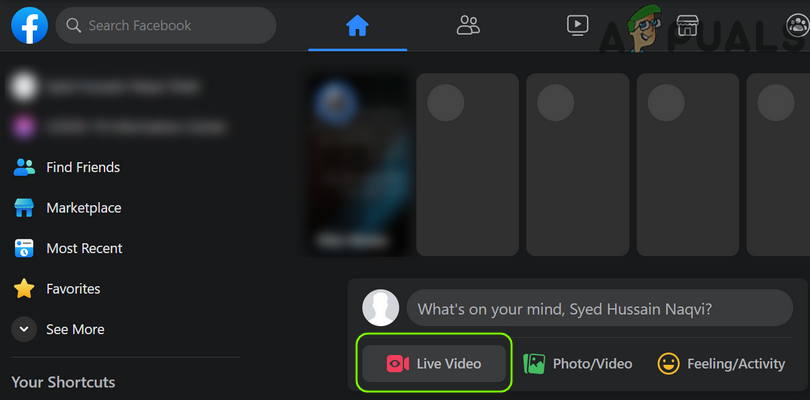
Open Live Video on Facebook - Then select Use Stream Key and scroll down till the end.
- Now click on Reset (in front of the Stream Key) and then copy the Stream key.
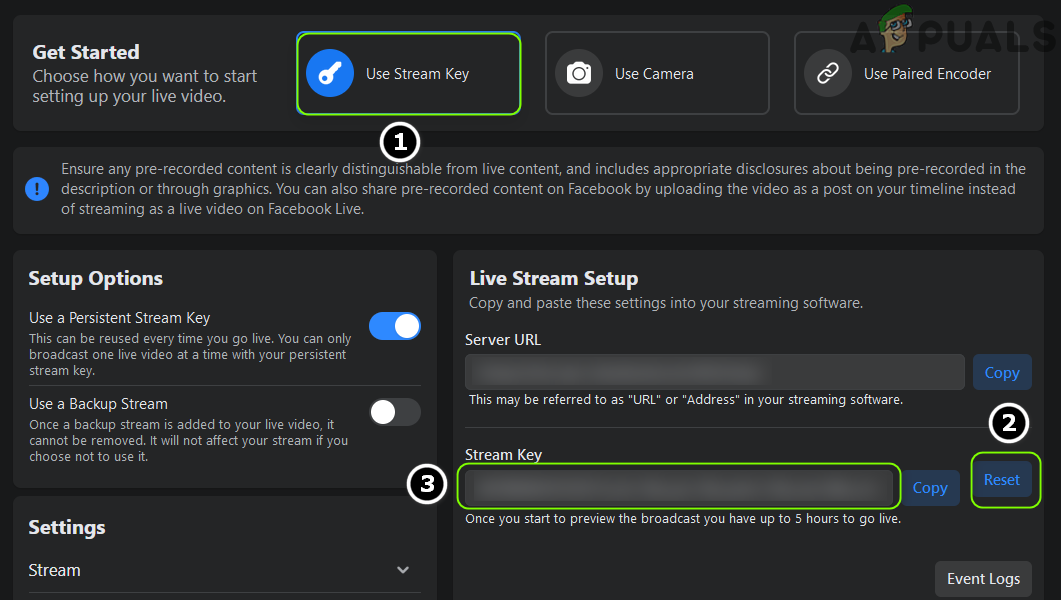
Create a New Stream Key in Facebook - Then launch OBS and click on Settings (near the bottom of the screen).
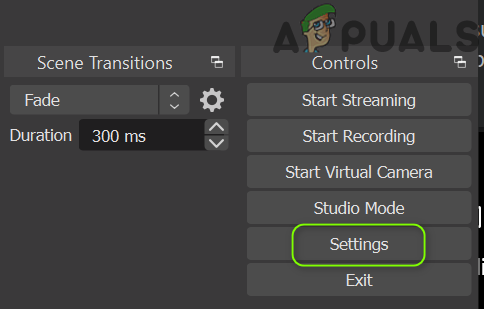
Open the OBS Settings - Now select Stream and paste the copied key in the Stream Key box.

Paste the Stream Key in the OBS Settings - Then apply your changes and check if the OBS is streaming without any issue.
If the issue persists, check if using a different account (e.g., a different Twitch account, if the issue is occurring with Twitch) resolves the OBS issue.
Solution 2: Enable Dynamic Bitrate in OBS
You may encounter the issue at hand if the frames are dropping during the streaming process. In this case, enabling the Dynamic Bitrate may solve the problem (this option is only available on OBS version 24 and above).
- Launch OBS and open its Settings.
- Now, in the left pane, select Advanced, and in the right pane, scroll down till the end.
- Then, in the Network section, checkmark the option of Dynamically Change Bitrate to Manage Congestion (just under Bind to IP).
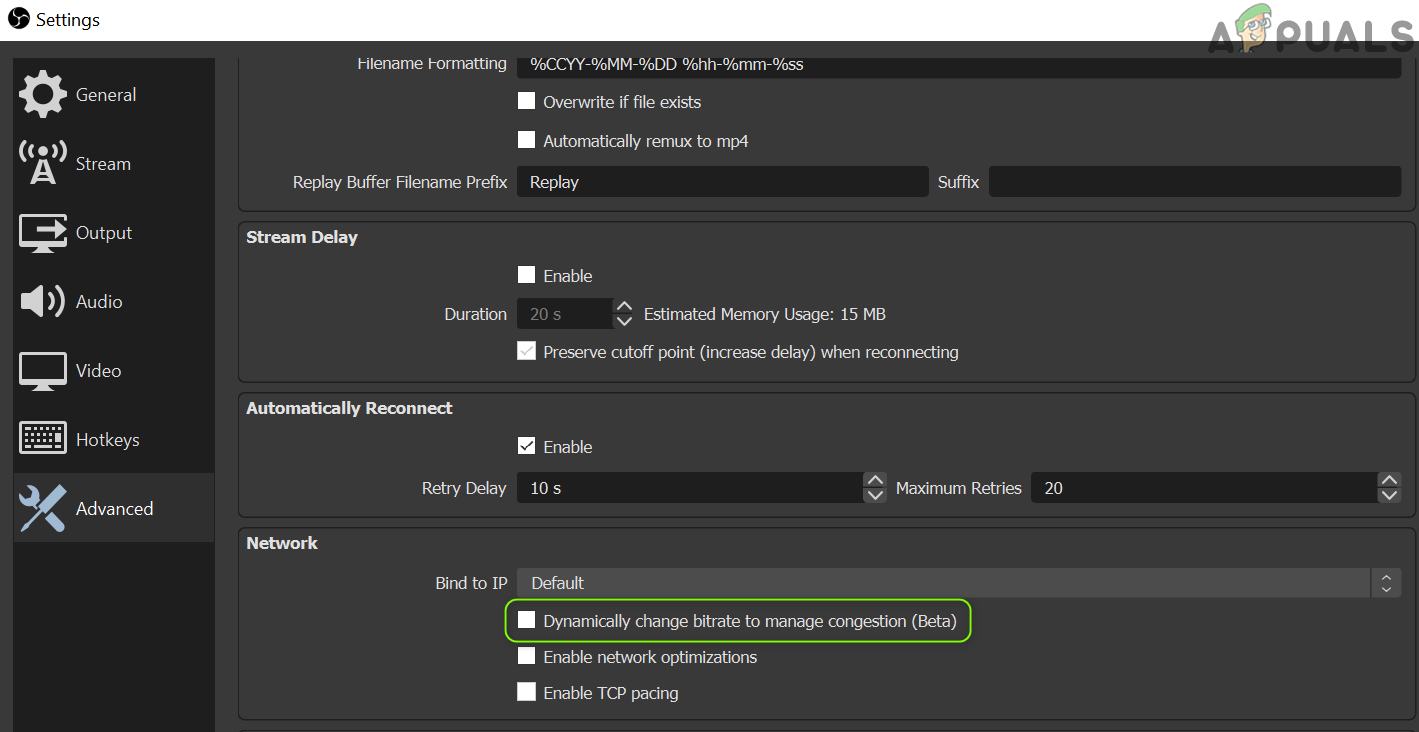
Enable Dynamically Change Bitrate to Manage Congestion - Now apply your changes and relaunch OBS to check if it is working fine.
Solution 3: Update the OBS and OS of Your System to the Latest Build
The OBS application may show the failed to connect to server message if the OBS application or the OS of your system is outdated as it can create incompatibility between the both (as well as with the servers you want to stream). In this scenario, updating the OBS and OS of your system to the latest build may solve the problem.
Update the OBS Application
- Launch the OBS application and open its Help menu.
- Now select Check for Updates and if an update is available, apply the update.
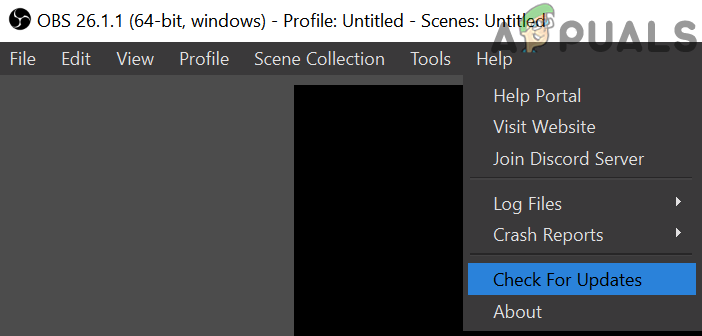
Check for Updates of OBS - Then reboot your PC and check if the OBS is working fine.
If you are using an obsolete version, then download/install (without uninstalling the previous version) the latest version of the OBS application and check if that resolves the OBS issue. If you are using a Linux distro that is based on PPA (like Ubuntu), then you may execute the following in the Shell to check if that resolves the OBS issue:
sudo apt install ffmpeg sudo add-apt-repository ppa:obsproject/obs-studio sudo apt update sudo apt install obs-studio
Update the OS of your System
For illustration, we will discuss the process for a Mac system, you may follow the instructions as per the OS of your system to update.
- Launch the Apple Preferences and open Software Update.
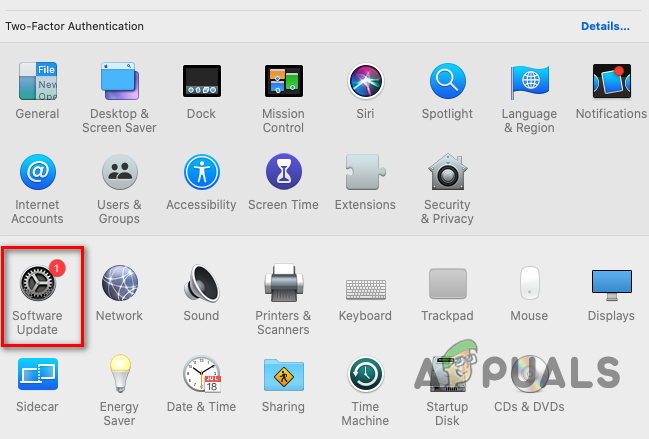
Open Software Update in the Mac’s Preferences - Now, check if an update of the OS is available, if so, apply the update and reboot the device to check if the OBS application is clear of the failed to connect to server issue.
Solution 4: Change the Streaming Server
The OBS application may fail to connect to a server if the server itself is down. In this case, changing the streaming server to a different location may solve the problem. For illustration, we will discuss the process for the Twitch service. But before proceeding, it will be a good idea to use a port scanner to check if the server port is open. If so, make sure an application is listening to the open port.
- Launch the OBS application and click on Settings.
- Now steer to the Stream tab and expand the dropdown of the Server (for some distant servers, you may have to lower the bitrate).
- Then select a different server and apply your changes.
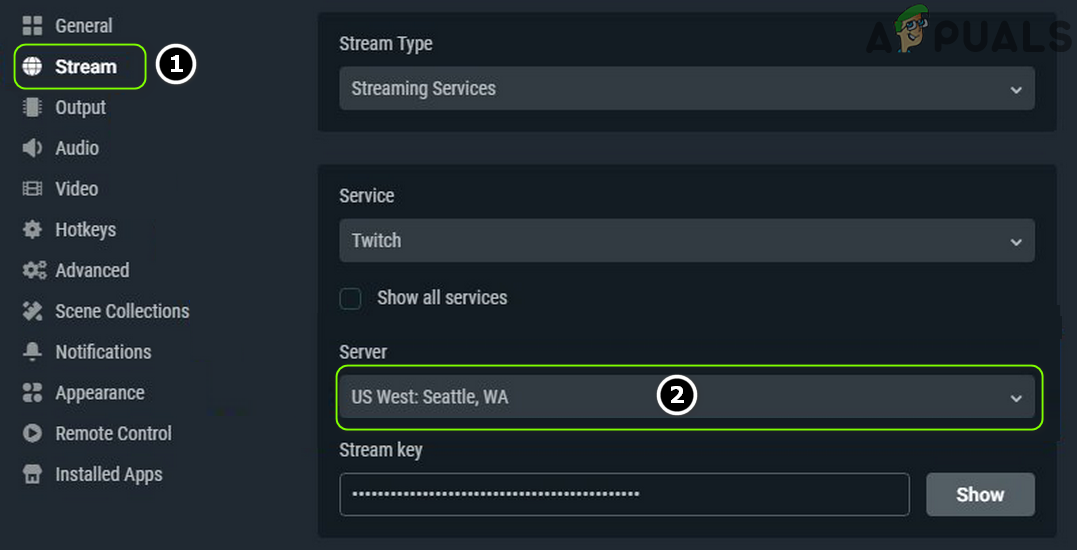
Change Streaming Server in OBS - Now relaunch the application and check if the OBS is clear of the server issue. If the issue persists, then you may try all the servers one by one in the OBS to sort out the issue.
If you are having trouble finding the server, then you may use the Twitch Test utility (or Ping the server) to find out the best server for you. For some services, you can try also try the auto-configure option to solve the OBS issue.
Solution 5: Edit the Bind IP Option in the Advanced Network Settings
The OBS application may fail to connect to a server if the Bind IP option in the Advanced Network settings is not properly configured. In this context, properly configuring Bind IP may solve the problem.
- Launch the OBS application and open its Settings.
- Now, in the left pane, steer to the Advanced tab, and in the right pane, scroll till the end of the screen.
- Then, in the Network section, expand the dropdown of the Bind to IP and select Default.
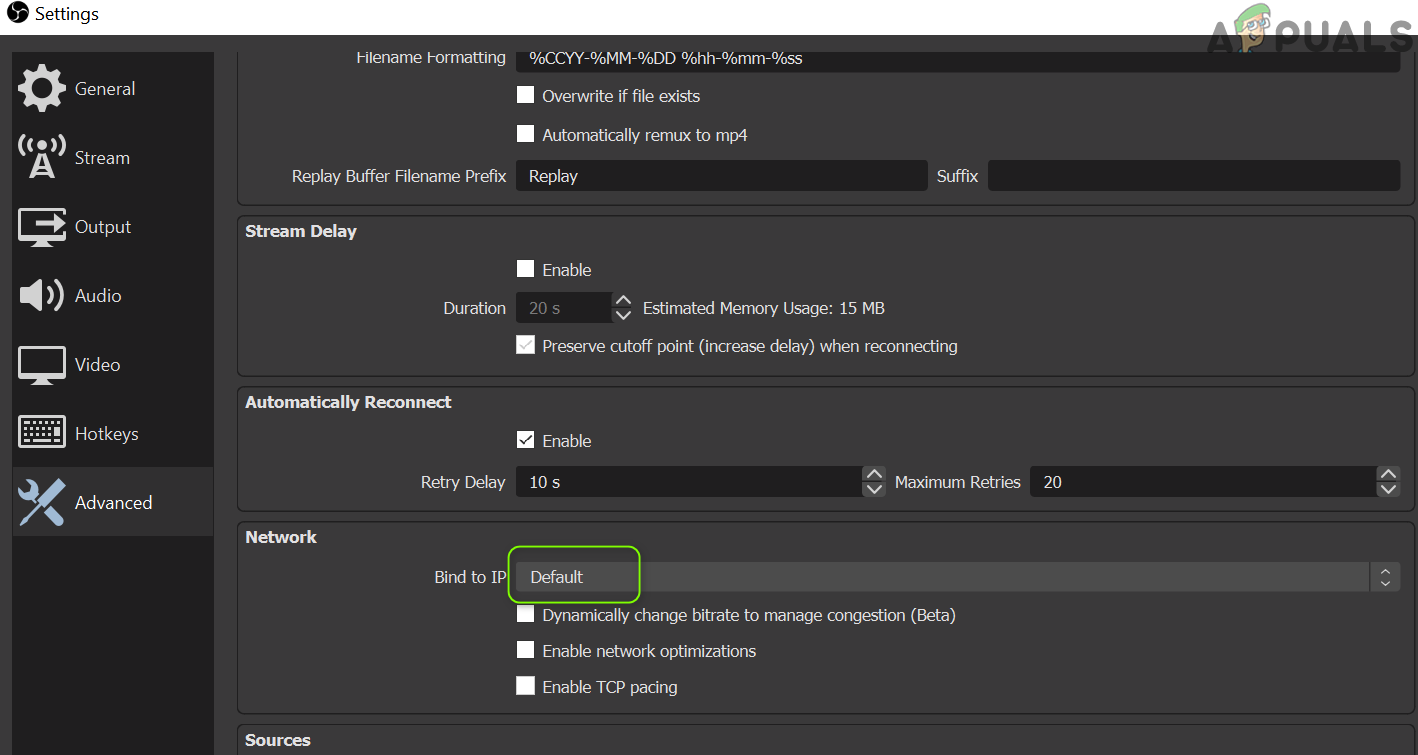
Set Bind to IP to Default in OBS - If it is already set to Default, then select the network connection name with the IP address (preferably IPv4 address) of your system. If the Bind to IP option is greyed out, make sure to disable all OBS outputs like NDI, virtual camera, etc., and try again).
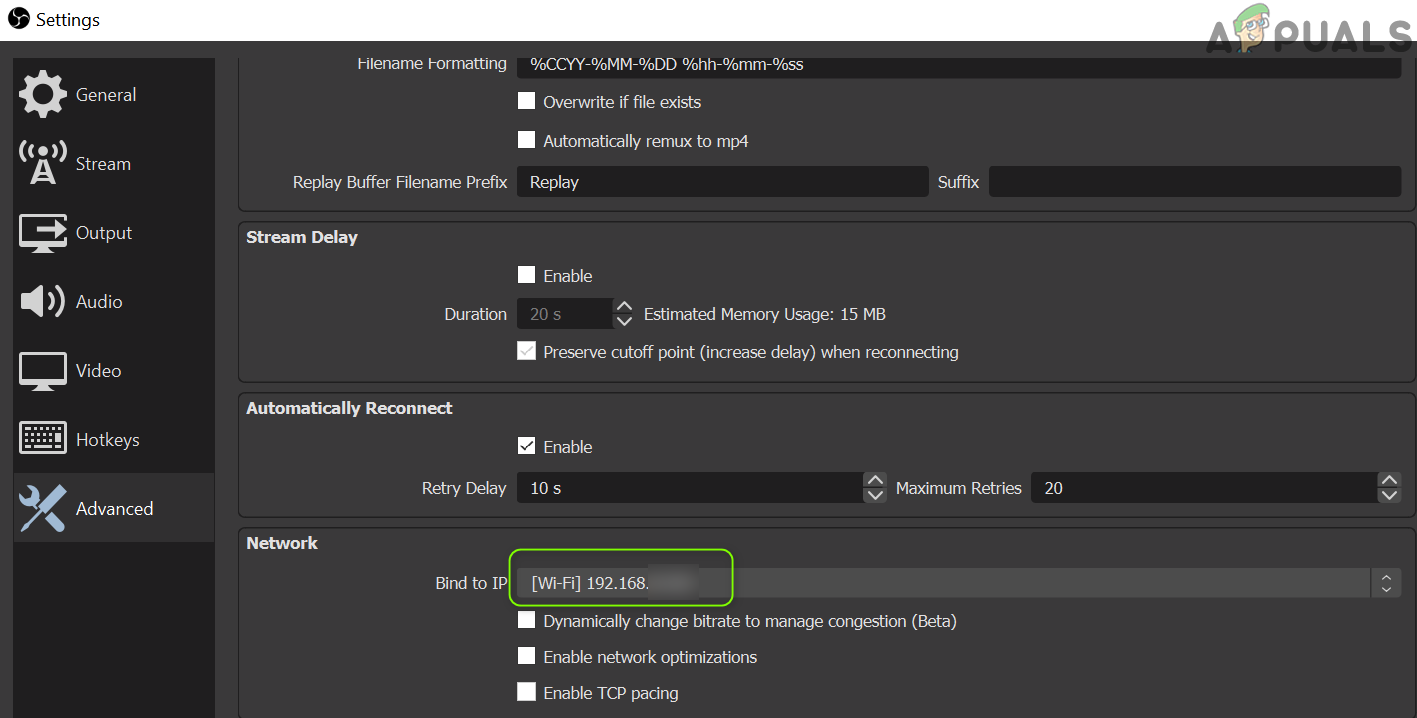
Set Bind to IP to Your IPv4 in OBS - Now apply your changes and check if the OBS can connect to the server.
Solution 6: Allow the OBS Through the Firewall of Your System
You may fail to stream through the OBS if your system’s Firewall is blocking access to a resource vital for the operation of the OBS application. In this context, allowing the OBS through the Firewall settings of your system may solve the problem. For elucidation, we will discuss the process for Windows Defender Firewall.
- Click Windows, type: Firewall, and open Windows Defender Firewall with Advanced Security.
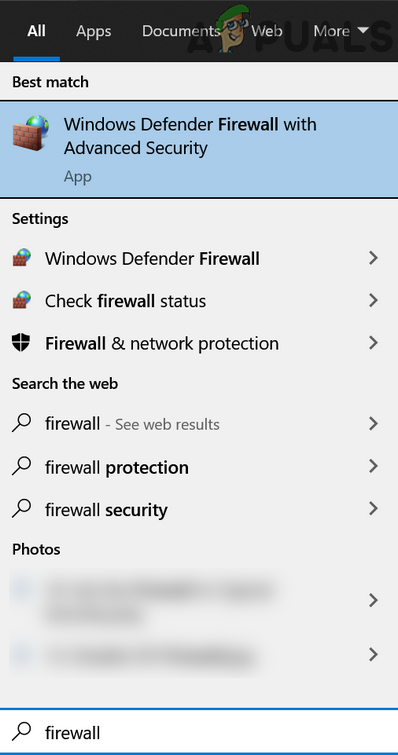
Open Windows Defender Firewall - Now, in the Outbound Rules and Inbound Rules tab, make sure no rule is blocking OBS (e.g., select Inbound Rules and press the O key to check for OBS entry).
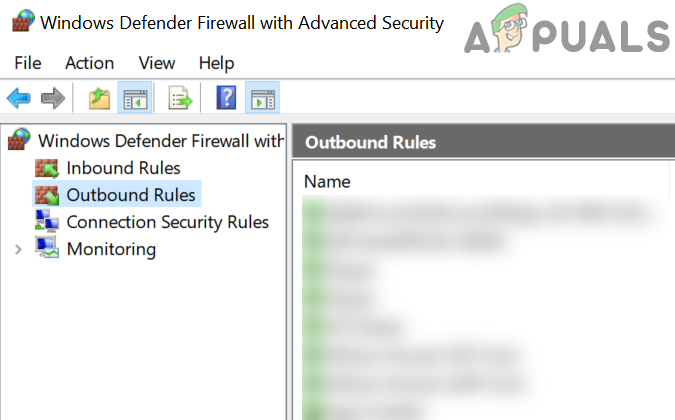
Check Firewall for Rules Blocking OBS and Select Outbound Rules - Then, in the left pane, select Outbound Rules and expand the Action menu.
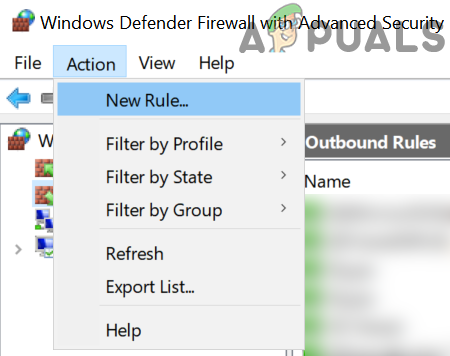
Create a New Rule in Firewall - Now open New Rule and select the radio button of Program.
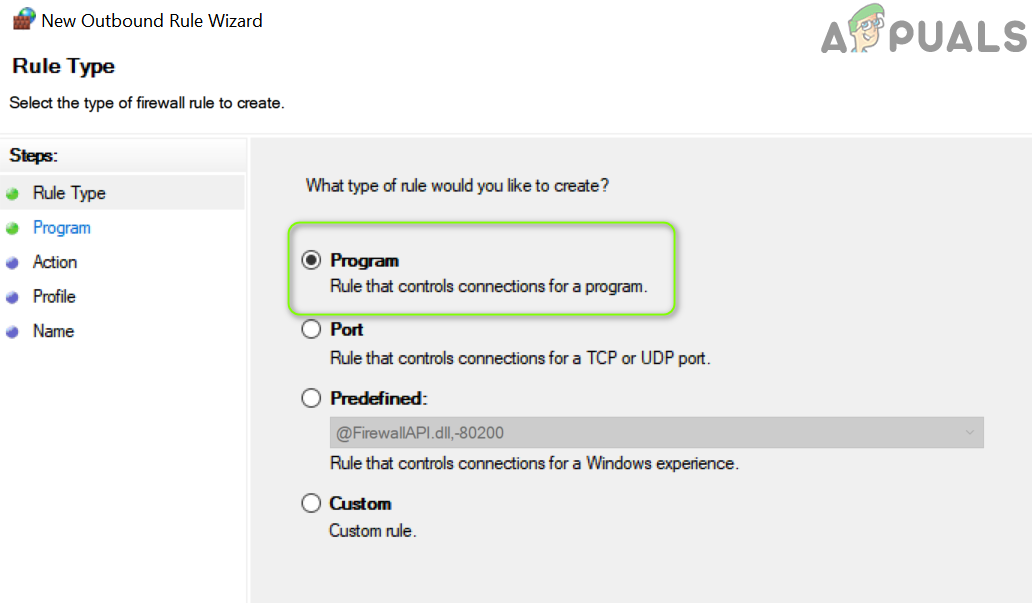
Select Program in New Rule Window - Then click on Next and click on Browse (in front of This Program Path).
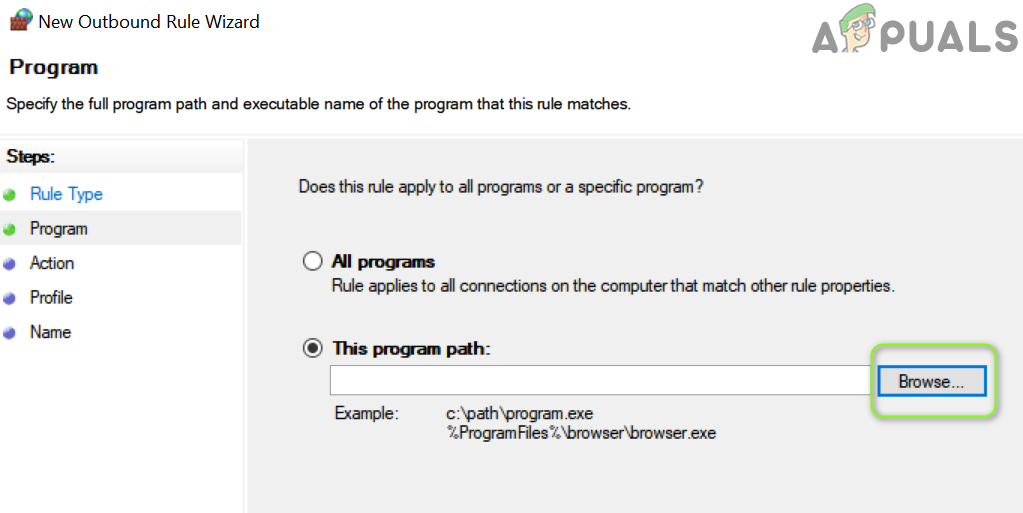
Open Browse and Steer to The Installation Directory of OBS - Now navigate to the installation directory of OBS and select its EXE file as per your OS version (e.g., OBS64.exe in the /bin/64bit folder of the installation directory).
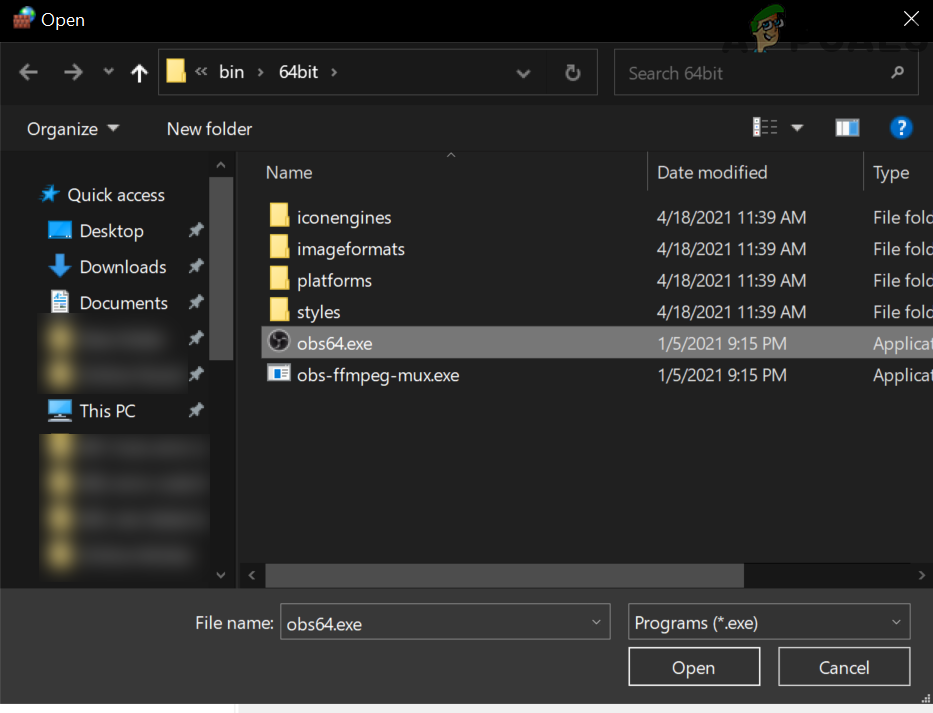
Select OBS64.exe in Firewall Rule - Once the path is added in the Firewall window, click on Next and select the radio button of Allow the Connection.
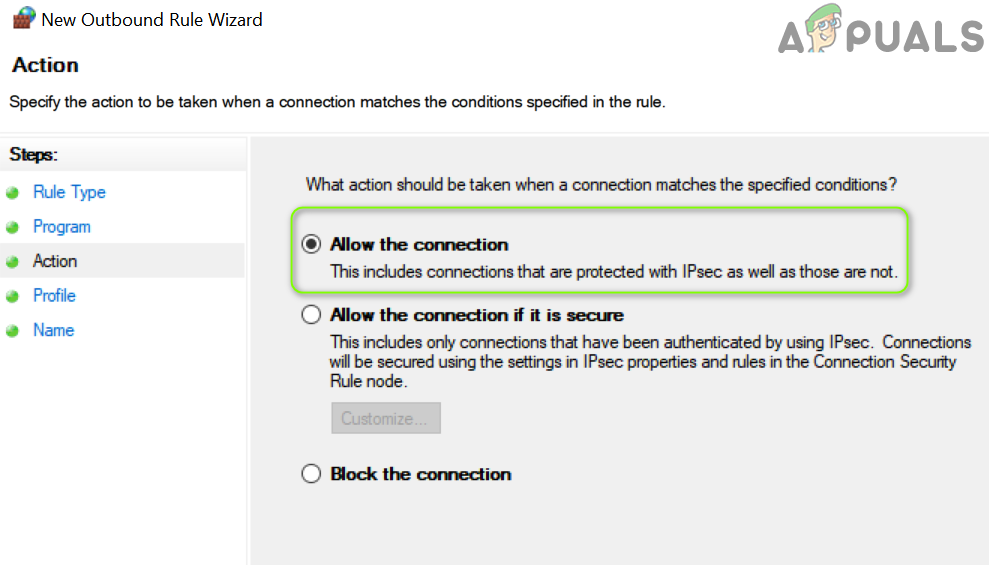
Select Allow The Connection in New Rule Window - Then select the Profile as per your requirements (for testing, it is better to select all the three options i.e., Domain, Private, and Public) and click Next.
- Now enter the name and description as per your requirements and click on Next.
- Then reboot your PC and check if the OBS can stream without any issue.
If the issue persists, then make sure that the router’s firewall is not blocking OBS. Also, if you are using the OBS application in a VM, then check if the Firewall (of the system or Router) or the VM itself is not blocking the access of the OBS. If so, then open the TCP port 1935 (Outbound Rules>> Action>> New Rule>> Port>> TCP 1935) in the Firewall settings to check if that resolves the OBS issue. If the issue persists, then check if disabling the antivirus of your PC resolves the OBS connection issue.
Solution 7: Lower the MTU (Maximum Transmission Unit) Size
The MTU (Maximum Transmission Unit) is used to set the maximum size of the network packet to be sent and a streaming server may drop the packets (sent by the client) that are greater in the size from the configured MTU size of the server. In this scenario, lowering the MTU (Maximum Transmission Unit) size may solve the problem. For illustration, we will discuss the process for a Windows PC and you may follow the process as per your OS.
- Right-click Windows and select PowerShell (Admin).
- Now execute the following:
netsh int ipv4 show subinterface
- Then note down the name of your network in the Interface column and execute the following:
netsh interface ipv4 set subinterface <subinterface name> mtu=1400 store=persistent
- Then again execute the following to check if the MTU size of your network adapter has changed:
netsh int ipv4 show subinterface
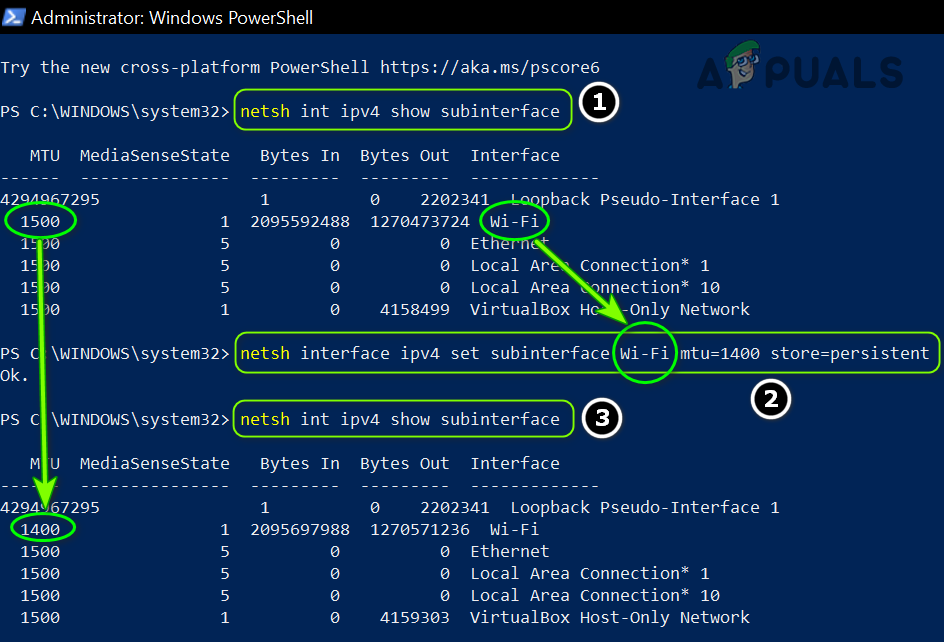
Change the MTU of Your Network Adapter - Now reboot your PC and check if the OBS is clear of the failed to connect to server issue.
Solution 8: Reset the Router to the Factory Defaults
You may encounter the issue at hand if your router settings are corrupt. In this case, resetting the router to the factory defaults (make sure to keep the credentials/instructions available) may solve the problem. This process is usually not difficult but due to diversity in the router’s make and models, it is not feasible to cover all of them but the general approach is usually the same. You can reset the router either through a button on the router or use its web portal.
Reset Router Through a Button
- Switch on your router (if powered off) and locate the Reset button, either on the bottom or backside of the router.
- Now press /hold (you may use a small and pointy item, e.g., a paperclip) the reset button for at least 30 seconds.
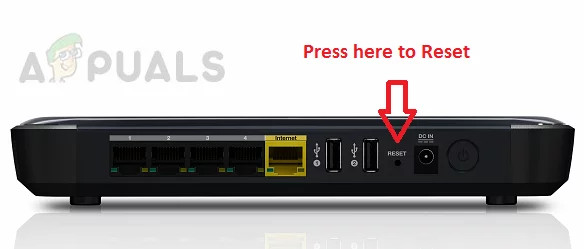
Reset Your Router - Then release the reset button and wait till the router is fully reset and powered on (it may take 30 to 60 seconds to complete). If there is no Reset button on the router, check your device’s manual to find out if the power button of the router can be used to reset it.
Reset Router Through the Web Portal
- Launch a web browser and steer to the default gateway of the router (e.g., 192.168.1.1, the default gateway can be found by the IPConfig command in the Command Prompt). Then enter the credentials to open the router’s web portal.
- Now, the complicated part, as the reset option may be located at different locations in different routers. Usually, it is in the System or General tab. Locate the Reset Settings (or Restore Defaults) option and then click on it. Now confirm to reset the router and wait till the process is completed.

Restore Your Router to Default Settings’
After resetting the router, make sure the necessary ports are forwarded (if required by the streaming server) and hopefully, OBS failed to connect issue is resolved.





